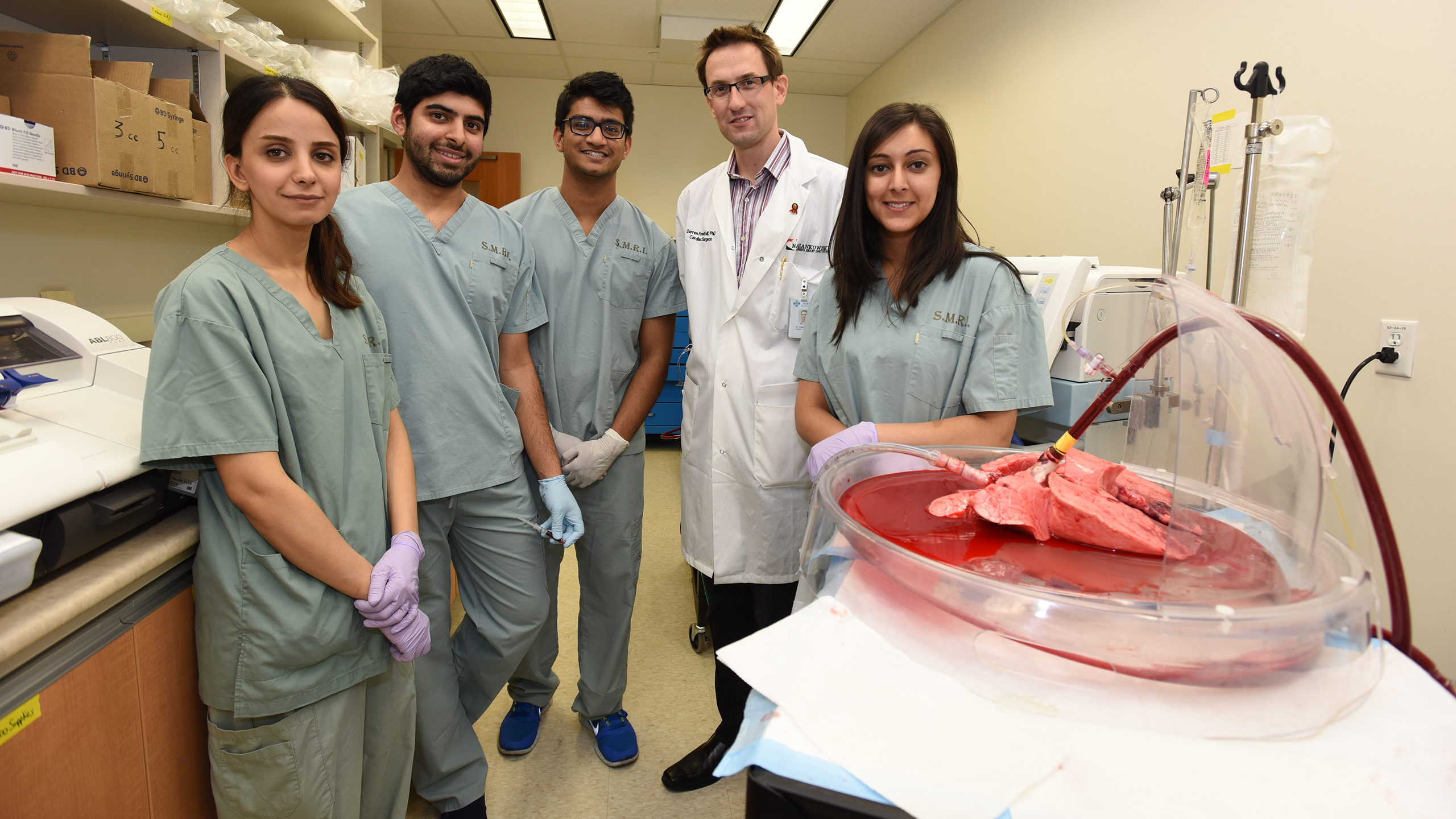
Tevosol is one of the University of Alberta spin-off companies led by FoMD researchers.
Our people in the Faculty of Medicine & Dentistry did amazing things in 2016. Their stories, shared on our website, offer a glimpse into what fuels their passion for the life-saving work they do each day in the labs, classrooms and clinics with our learners, patients and partners in innovation.
Our most viewed stories from 2016 are a great reflection of the FoMD's commitment to building an exceptional high-performing academic health sciences centre serving the public good to address priority health concerns.
1. Meet three U of A spin-off companies led by FoMD researchers bringing Edmonton a step closer to becoming Health City
From organ transplants to cancer treatment and detection, three innovative University of Alberta spin-off companies led by Faculty of Medicine & Dentistry researchers are game changers in the health care field. The companies, MagnetTX Oncology Solutions, Tevosol and Metabolomics Technologies Inc. will help improve patient care and build Edmonton's reputation as Canada's Health City.
2. Scientists aim to slow fast growth of cancer cells
New research co-authored by University of Alberta researchers Arun Raturi, Tomas Gutiérrez and Thomas Simmen describes how a single protein slows down tumour growth. The breakthrough gives researchers greater insight into the growth of cancer cells.
3. New blood test identifies women at risk of preterm delivery as early as 17 weeks of pregnancy
An international team of researchers assembled by FoMD researcher David Olson has developed a blood test to identify pregnant women at risk of delivering babies prematurely. Their findings were published in PLOS One.
4. Using Metabolomics to prevent colon cancer
UAlberta-developed science behind a new diagnostic test is now being used clinically for the early detection of precancerous polyps. The spin-off company that developed the test, Metabolomics Technologies Inc., was co-founded by Haili Wang and U of A Faculty of Medicine & Dentistry's dean, Richard Fedorak. The test gives physicians a new tool in the prevention of colorectal cancer.
5. Summer is time for fun and… swollen ankles?
A study by FoMD researchers Scott Garrison and Fangwei Lui helps family doctors identify ankle swelling as a seasonal condition. The study was published in Annals of Family Medicine. It reviews Google searches in the United States from January 2004 to January 2016 and shows that searches for information on ankle swelling peak during summer.
6. The past, present and bright future of a diabetes breakthrough
Sixteen years ago, UAlberta scientists transformed Edmonton into the world's leading light in the quest to cure Type 1 diabetes. Innovation in diabetes research still continues at the University of Alberta, thanks in part to researchers like Ray Rajotte, James Shapiro and Greg Korbutt.
7. The Women & Children's Health Research Institute, through the eyes of Sandy Davidge
The Faculty of Medicine & Dentistry's Women and Children's Health Research Institute received the largest single gift in U of A's history. Learn from this Q & A with its director why this institute is so important and who will be aided by this transformational donation.
8. Maintaining a healthy heart through bile acids
Groundbreaking research from the University of Alberta and McGill University has opened the door towards the future prevention of cardiac fibrosis-a condition leading to heart failure for which there is currently no treatment.
9. Newly discovered infectious prion protein shines light on mad cow disease
Prion researchers at the University of Alberta used breakthrough electron cryomicroscopy technology to identify the structure of the infectious prion protein. The structure of the infectious prion protein had long remained a mystery. The misfolded protein is the cause of "mad cow disease" or BSE, chronic wasting disease in deer and elk and Creutzfeldt-Jakob disease in humans.
10. JDRF and the University of Alberta work to one day make insulin injections a thing of the past
JDRF Canada awards $824,164 (USD) to The Faculty of Medicine & Dentistry's Gregory Korbutt to explore new devices that will improve survival of transplanted insulin-producing (islet) cells used to treat type 1 diabetes.